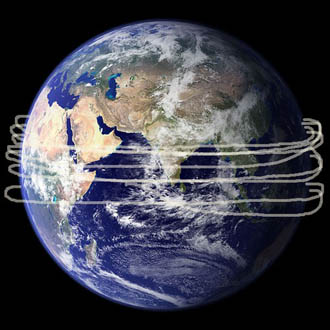Building our Membership through Knowledge Sharing
Our first initiative is an educational program designed to introduce peak oil theory to the general public. The campaign, imitating the breast cancer awareness initiatives, will alert the public to the adaptive challenge the economy faces in a peak oil world. The hope is we can bypass the politics of alternative energy by framing the need for new energy solutions in macroeconomic terms.

Connecting People to Our Purpose
We chose peak oil theory as our first issue because its obscurity affords us access to minds uncluttered by partisan preconceptions (if they don’t know about it, they can’t be against it). Sharing information on unique and interesting issues, such as the science of peak oil, that are non-threatening to established biases, allows us to build rich, trusting relationships with our audience. Through these relationships, formed from insightful initiatives, we rise above the rancor to build an organization that can connect people to our purpose.

Indisputable and Important.
Peak oil theory, while being largely unknown to the general public, is a hotly debated subject within the oil investment community. The disputes arise from a misinterpretation of the theory’s core premise, which states that there is a point-in-time when the maximum rate of extraction of oil is reached. Meaning, there is some daily production rate that the world will never go above, as global oil production mimics the bell curve production profile of an individual oil field (graph). The detractors incorrectly conflate running out of oil with PEAK PRODUCTION. Peak oil theory does not suggest that the world is close to running out of oil, it only proposes that the laws of physics dictate how fast the oil can be extracted.

Peak oil Understood
This is a graph of Prudhoe Bay’s production profile. As the natural pressure of the field decreased, around 1980, the field operator instituted secondary and tertiary recovery methods (water and gas injection wells). The recovery methods were able to maintain the plateau until the final peak of 1.5 Mbpd was reached in 1987. Today, the field produces about 250,000 bpd, but still contains an estimated 1 billion barrels of recoverable oil (the mathematical relationship between production and proven recoverable reserves breaks down as a field ages).

The Big Numbers
Currently, the world produces 95 Million barrels of crude oil per day (Mbpd). For context, if that DAILY USAGE was put into foot-high, one-gallon containers and strung together, the chain would stretch around the earth’s equator 32 times. The world’s proven reserves are 1.7 trillion barrels, of which, 500 billion are tar sands (Over the last 7 years new field discoveries equaled 36.5 Billion; a 15% replacement rate). The world is on track to use 1 trillion barrels over the next 26 years.
As you’ll learn in our Q&A, many of the 20 super-giant oil fields ( at least 300 sq. miles) that contribute significantly (23%) to this global total are in terminal decline, leaving the world to rely on extreme oil sources like shale and tar sands for future growth. This reliance is unsustainable over the long-term and thus demands an aggressive societal response to assure the U.S. has the energy infrastructure necessary to support its GDP growth targets.
Forliant intends to be at the forefront of that response.
